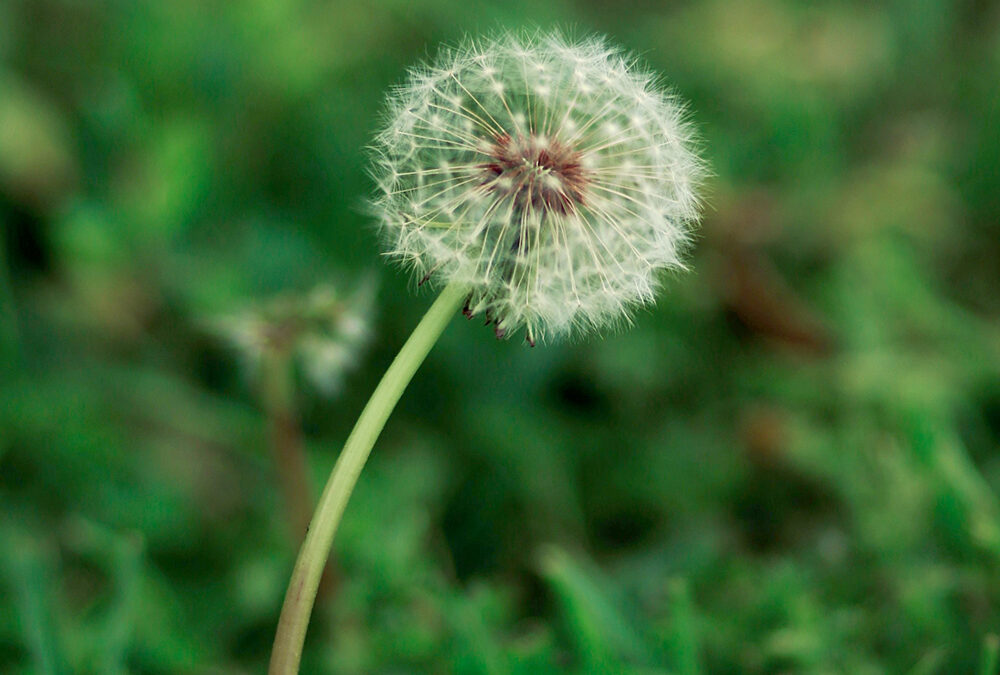Let It Grow
By Tammy Thornton
When most people see a dandelion, they either love it or hate it. Children and those of us who are young at heart can’t resist picking a dandelion that has gone to seed and blowing its parasols into the air. But if your weekend goals normally consist of cultivating a lush, green “yarden,” then you probably fall into the dandelion-hating group. Others may envision the perfect ingredient for a tasty dish or drink with healthy benefits. In honor of Dandelion Day on April 5, let’s dive into the ups and downs of this ubiquitous flower.
While dandelions are mostly categorized as weeds, you may want to view them in a different light. All parts of the plant are edible, right down to the roots, and they are full of nutrients. The jagged leaves give dandelions their name, which is derived from the French “dent-de-lion” (lion’s tooth). These leaves resemble arugula both in looks and their bitter and earthy taste and can be added to soups and salads. Freshly picked leaves earlier in the season will be less bitter than more mature leaves. Blanching them in salted water before adding garlic and olive oil will take away some of the bitterness, but if you want to eat them fresh in a salad, combine your dandelion leaves with milder greens for balance. You can also add dandelion leaves to egg dishes or combine them with other herbs for a unique pesto. My Uncle Mike’s Italian grandmother used to make both liquor and wine from dandelion flowers. They can also be used to make dandelion jelly, honey, or tea. You can also use the roots to make tea or a caffeine-free coffee substitute. Dandelions are known to be a diuretic and can be sources of iron, zinc, and potassium as well as vitamins such as A, C, and K. Of course, you want to be cautious when foraging for dandelions to be sure they have not been treated with pesticides.
If you are in the group that considers dandelions as weeds that must be removed, you may have your work cut out for you. While attempting to remove a dandelion from your lawn, you will want to use a tool that can dig deep. Dandelions have a long tap root that can be 6-18 inches long. If you do not remove the entire plant, it can regrow. At least our sandy South Jersey soil will make it a little easier to remove the plant, especially if you choose a day after a rainfall when the soil is soft and moist. If you have not removed the entire plant, mow over the flowers before they go to seed. One flower alone can contain 150-200 seeds — that’s a lot of wishes!
Take heart if you left a few extra dandelions in your garden; they are a symbol of hope, healing, dreams, wishes and resilience. If all else fails, you can grab a handful of leaves and make yourself a healthy lunch.
We would love to hear your take on dandelions. Do you consider them weeds or wishmakers? Send your favorite memories of using dandelions in recipes to shorelocalgardener@gmail.com.
Tammy Thornton lives with her husband, children, and crazy pets while enjoying a life of gardening, cooking, and going to the beach.













